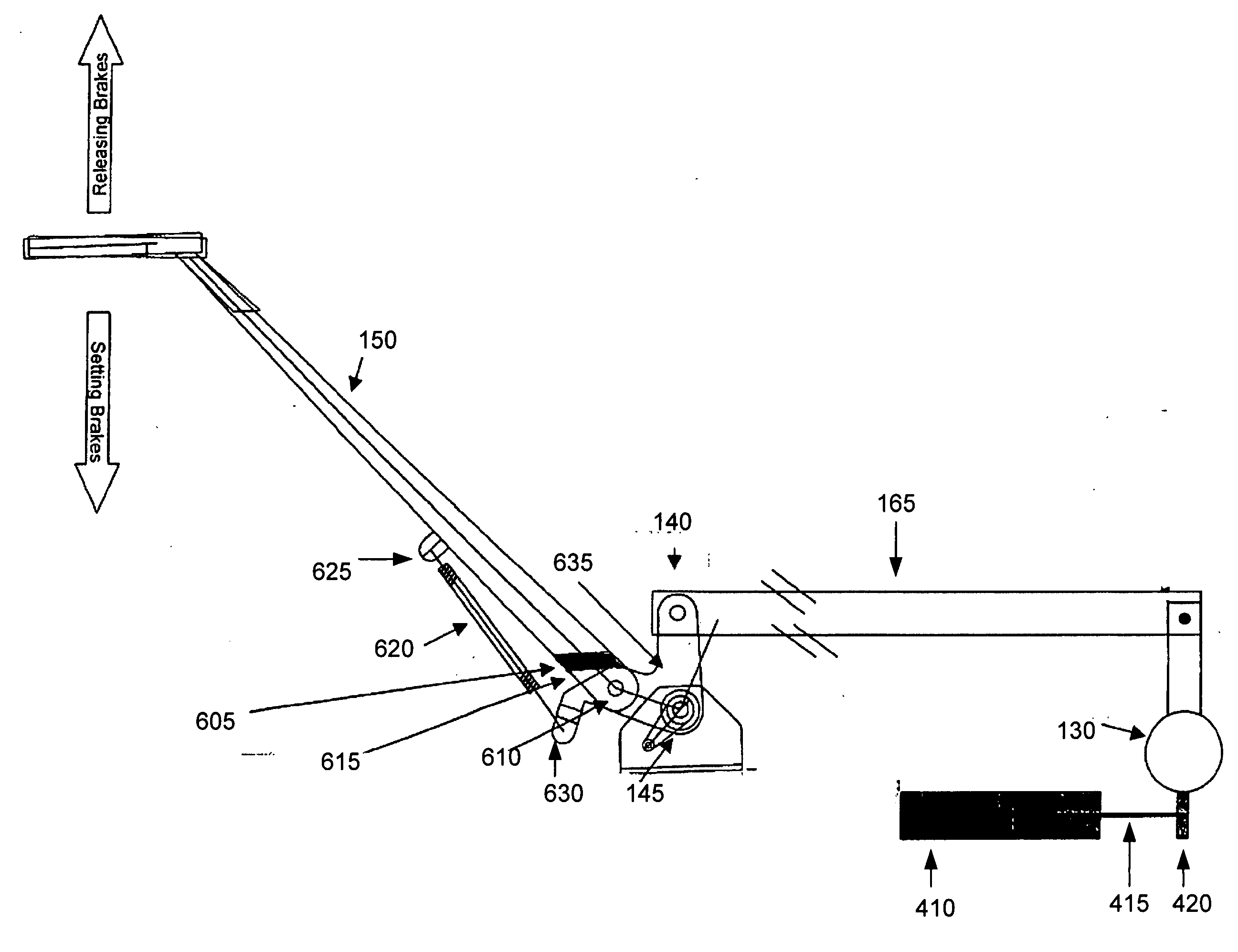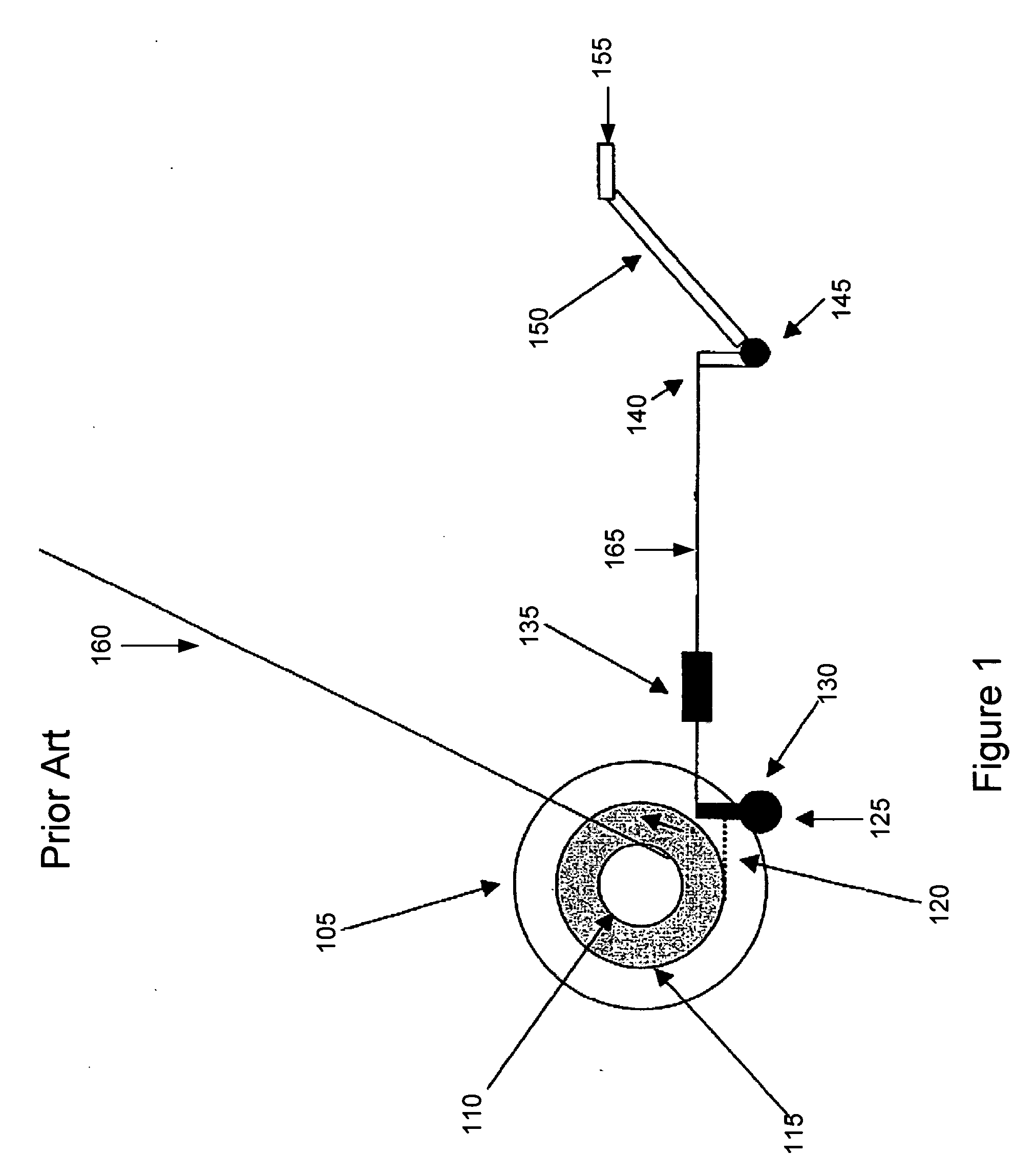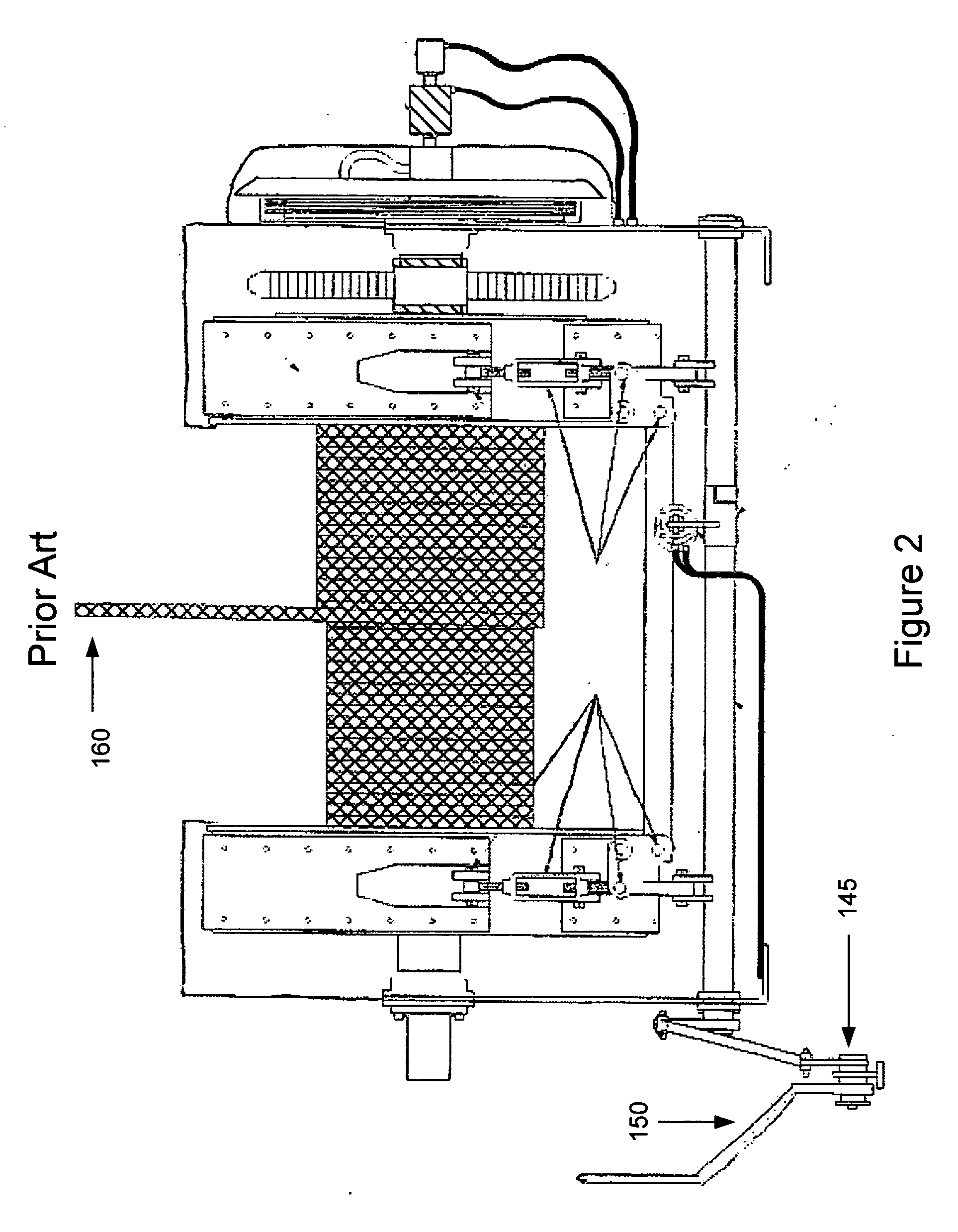Brake system for a well service or drilling hoist
a technology for hoists and brake systems, which is applied in the direction of mechanically actuated drum brakes, hoisting equipment, emulsification, etc., can solve the problems of operator inadvertently exceeding the safe position of the traveling block, equipment damage, and hazard to personnel working on the equipmen
- Summary
- Abstract
- Description
- Claims
- Application Information
AI Technical Summary
Benefits of technology
Problems solved by technology
Method used
Image
Examples
Embodiment Construction
[0024] Exemplary embodiments of the present invention will now be described in detail with reference to the figures for an exemplary operating environment of operating a drum braking assembly for a well service or drilling hoist. While the exemplary braking system of the present invention is described in the context of an operative environment used for braking systems to slow or stop a drum on a well service or drilling hoist, those of ordinary skill in the art will recognize that the braking system can be used in many other applications to slow or stop other types of vehicles or devices.
[0025] A method and system for a brake lever pivoting about a bell crank to activate a braking system will now be described more fully hereinafter with reference to FIGS. 6-8, which show an exemplary embodiment of the present invention. Turning now to FIG. 6, the exemplary drum braking system 600 includes a brake handle 155 attached to a brake lever 150. The brake lever 150 extends between the brak...
PUM
| Property | Measurement | Unit |
|---|---|---|
| force | aaaaa | aaaaa |
| rotational movement | aaaaa | aaaaa |
| distance | aaaaa | aaaaa |
Abstract
Description
Claims
Application Information
 Login to View More
Login to View More - R&D
- Intellectual Property
- Life Sciences
- Materials
- Tech Scout
- Unparalleled Data Quality
- Higher Quality Content
- 60% Fewer Hallucinations
Browse by: Latest US Patents, China's latest patents, Technical Efficacy Thesaurus, Application Domain, Technology Topic, Popular Technical Reports.
© 2025 PatSnap. All rights reserved.Legal|Privacy policy|Modern Slavery Act Transparency Statement|Sitemap|About US| Contact US: help@patsnap.com



